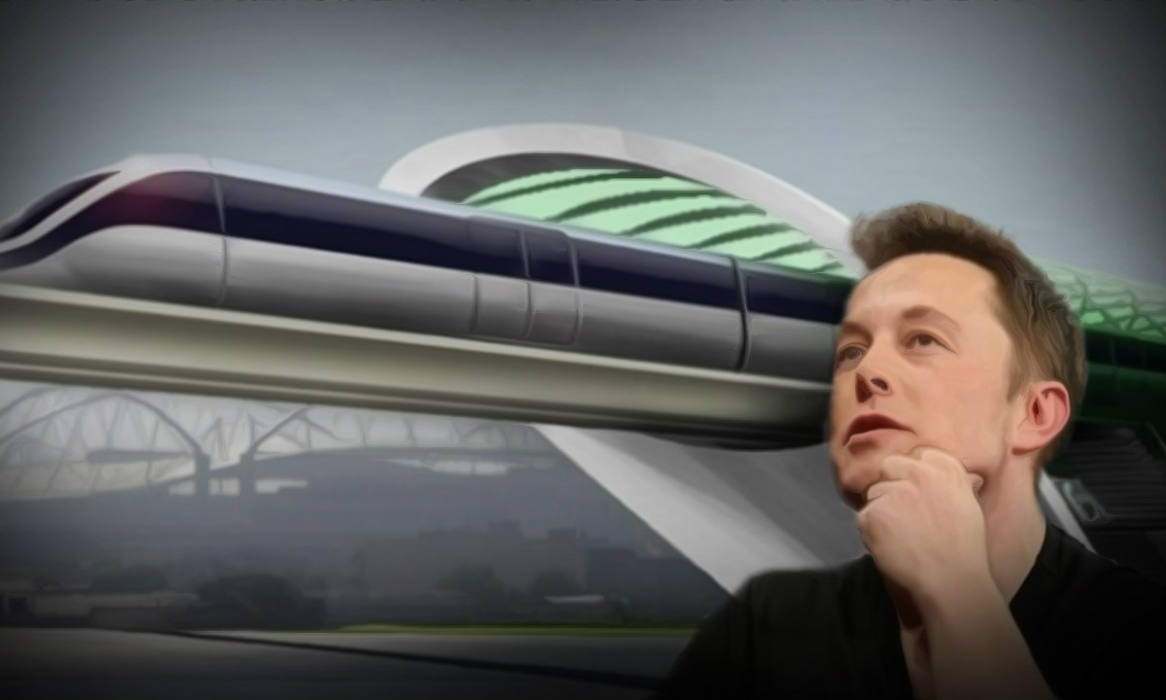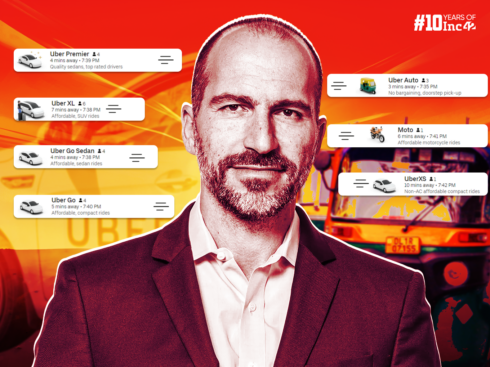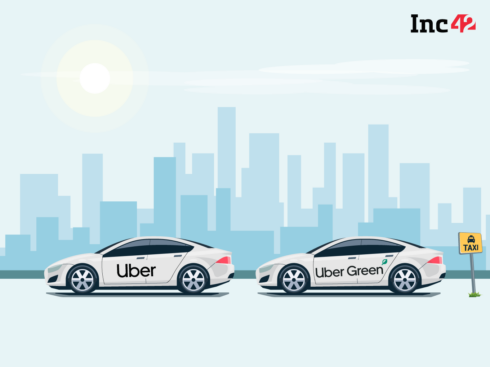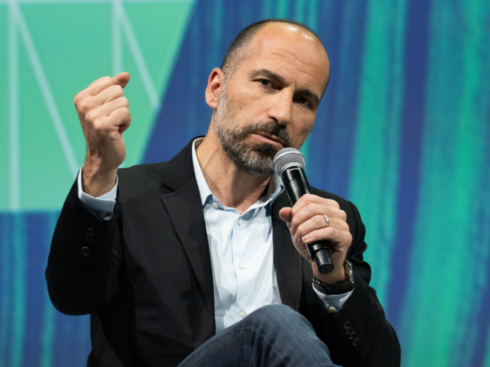One planet. Seven billion people. And only four modes of transportation. First, the wheel was invented. From the wheel came carriages. From the carriages came locomotives. And from the locomotives came high-speed trains, planes, and cars. All of which meant better, faster and newer means of moving from one place to another – for goods as well as people. And now, we have ‘hyperloop.’
When the Wright brothers first floated the idea of building a machine that would fly like a bird and be able to carry human beings inside it, they were laughed off. And for good reason. New technology is scary and untestable – what if it fails? This is the fear that most often holds back progress.
Imagine this. The three-hour distance between Mumbai-Pune is reduced to a mere 40 minutes. The 90-minute plane journey between Mumbai-Delhi could become part of our daily commute, as easy as boarding the Delhi Metro from Saket to Rohini.
With entrepreneurship entering the bloodstream of those who dare to dream, it was only natural that someday, very soon – a man like Elon Musk would come and resuscitate an old idea to change the face of transportation by resuscitating an old idea. That of using pneumatic tubes along the Beach Pneumatic Transit line in New York City. An idea that was introduced in the nineteenth century – the hyperloop.
Hyperloop works on magnetic levitation with a pod inside a vacuum tube travelling at high-speed velocities to cut down travel time between great distances, significantly. Hyperloop technology was first announced four years ago and a few startups have staked their name to the Wild West frontier of conquering the way we conceive transportation.
The first, and most prominent among these is Musk-backed Hyperloop One, headed by Shervin Pishevar and Josh Giegel. The company has proposed 30 major hyperloop routes across the world – including Orlando and Miami. But the company has already been embroiled in a legal battle with co-founder Brogan Bambrogan leaving the company to found his own hyperloop startup – Arrivo.
Controversies aside, the company has made significant strides by already launching a pilot project in the Mojave desert in Nevada, US, according to Verge. The pilot route is a 7 kilometre run in Las Vegas and went into production in early 2016. The testing phase of the project is due to begin in the summer of 2017 – and while not much else is disclosed to the public regarding the project, reports have surfaced of strange job openings and on-site accidents. The testing has also been pushed back due to construction and feasibility delays.
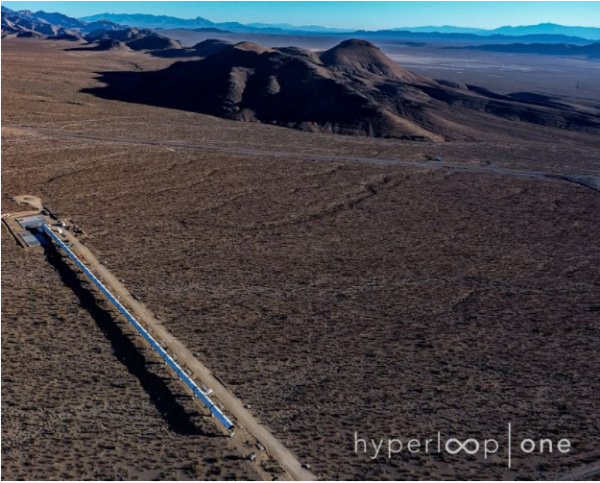
Hyperloop Transportation Technologies is the other company that is competing for top prize in the race to build out the technology. It has proposed contracts signed in California, Abu Dhabi, Canada among other countries and routes. The pilot project for Hyperloop Transportation Technologies is taking place in Abu Dhabi and is expected to be completed by 2017 end.
And India, with its new tag of Startup India Stand Up India, emphasis on entrepreneurship, innovation and leapfrogging tech adoption is perfectly poised to exploit this new form of transportation. As of now, infrastructure is changing with the Metros springing up all over Urban India (Mumbai, Delhi, Hyderabad, Bengaluru, among others) but it is still a traditional mode of transportation, isn’t it?
And this is where hyperloop – tentatively named the fifth mode of transportation – comes in.
The Hyperloop One India Connect
In 2015, spacetech company SpaceX announced a pod-designing competition to validate proof of concept. The objective was to invite students from all over the world to help build out the technology.
Hyperloop One India was one among four Indian teams to take part in this route feasibility challenge. The team’s pod design has been approved for the final round of the competition, as per the founder -Prithvi Shankar. The prototype pod has been designed to be around 4 metres in length and 1 metre in diameter. This prototype is expected to be fully functional by September 2017. The size of the pod has been decided to be kept somewhere around +/- 4 metres and about 1 metre in diameter.
The student-run team has now evolved into a professional non-profit organisation that is run by college students in India, across five colleges. In terms of message awareness, the organisation hosts various exhibitions across the country – such as in IITs and IIMs across the country. The purpose of these exhibitions is to encourage more students to join the team, for a more holistic engineering approach. The organisation also wants to reach out to other potential stakeholders such as investors, partners and the average Indian in order to enable them to understand what the technology is all about, and how it will impact our country.
With this in mind, Hyperloop One India’s Prithvi Sankar had an in-depth conversation with Inc42 to decode the technology, its impact on Indian cities and how they see the execution of this new mode of transport playing out in the Indian urban landscape
Magnetic Levitation, Air Resistance, And Contact Friction: How The System Works
“If you see any sort of transportation system that exists right now, there is a certain amount of contact friction between the vehicle and the surrounding environment (the medium the vehicle is travelling in). For e.g. a flight – there is friction between air and the plane. Secondly, air resistance, i.e. drag due to the number of air molecules the vehicle has to disperse while propelling,” he begins. Elon Musk extrapolated on this hypothesis to understand the two focal bottlenecks that exist in any transportation system – air resistance and contact friction. He proposed Hyperloop as a solution to both of these problems.
Velocity, which is mass accelerated with speed is the physics behind how objects in the physical universe. To explain this in terms of transportation, Prithvi shares that velocity is proportional to energy expended. In existing transports, the higher the input of energy, the higher the velocity. “A ship would require much less energy to propel, but at the same time, its velocity is much lower. On the other end of the spectrum, any kind of an aircraft requires a lot of energy expenditure, but due to that you can attain higher speed – ranging between 870-930 km/hour). So, that is the current transportation trend.”
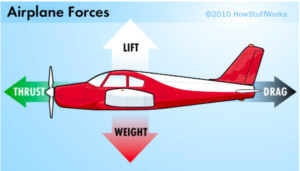
In contrast, Hyperloop is essentially a vehicle that is propelled using magnetic levitation inside a near vacuum chamber (tube). Due to being created in near vacuum, the pressure becomes extremely low and so the number of air molecules present inside the tube are also negligible. This leads to minimum air resistance, so, eventually, all you have to do is to accelerate the vehicle to a good velocity (giving it a rocketship-like boost) and it will continue to move at that particular velocity for a fair distance.
This continuous supply of energy needed to sustain a car, ship or aircraft, is not needed with the hyperloop, as it operates on the principle of magnetic levitation (maglev). The principle of magnetic levitation is that ‘same poles repel each other and opposite poles attract each other.’ Levitation happens due to the simultaneous occurrences of both these events.
Maglev transport currently exists in China, Japan and Germany, which runs commercial maglev trains – ranging in speed from 500 km/hour. These trains use electromagnetic levitation – wherein electricity has to be supplied in order to maintain a magnetic field and keep the train running. The trains are run on open platforms.
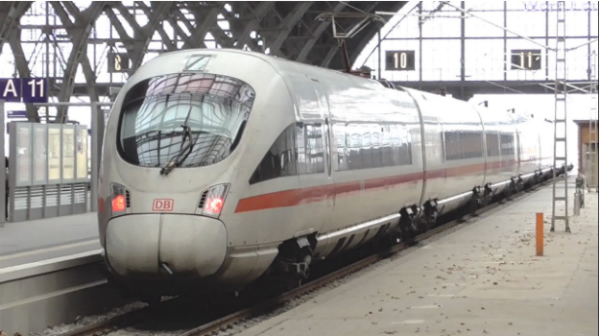
“On the other hand, hyperloop uses passive maglev, which uses permanent magnets and will run at an estimated 1200 km/hour. This is safer because, being a controlled environment (the vacuumed tube as opposed to the open platforms), interaction with the outside environment is limited. So, there’s almost no possibility for any sort of accident.”
Breaking Down The Transportation Benefits Of Deploying Hyperloop In India
Prithvi does admit that, even in proof of concept, the system is not entirely foolproof. And requires a failsafe and safety measures to be considered and put in place. For instance, if there is a breakdown when the tube is in motion at 1200 km/hour speeds, the damage would be more severe as compared to normal trains, or even the much slower maglev train. Prithvi counters this by asserting that, with no direct contact with the outside environment, the environment inside can be controlled to an extent.
“All the air inside is pumped out on a regular basis and if you see any safety issue, you can always pump in air to slow it down. Compare this with cars, trains and maglevs which are exposed to the weather outside, and thus in more danger of having accidents.”
Hyperloop works on permanent magnets as opposed to existing electromagnetic maglev trains, which require constant maintenance and supply – all of which means recurring expense. This feature is voided with the hyperloop as higher velocities can be reached by expending less energy, due to the absence of friction. In a cost-reductive economy such as India, this point would work in the technology’s favour, should it become operational.
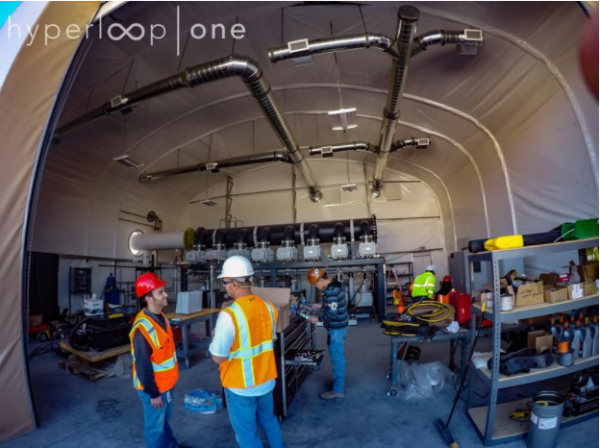
Second, it is much cheaper than the high-speed rail because of passive magnetic levitation. The technology looks at replacing electromagnets with permanent magnets, so there is no expenditure to maintain the running cost of the mode. You are able to reach higher velocities by spending less amount of energy, because of the absence of contact friction.
Currently, urban cities such as Mumbai, Delhi, Hyderabad are undergoing massive congestion and traffic snarls due to the construction of the Metro – a project that is expected to take about 3-5 years or more. Adding the non-linear construction time for hyperloop (barring testing/piloting) the process is deemed non-disruptive. “It’s either above grade or below grade: Above the land on pillars, it does not disturb your present infrastructure. Or underground, so it doesn’t really challenge the existing systems,” adds Prithvi.
The system is also supposed to be environment-friendly. The permanent magnets plus tube in vacuum, mean that the system does not require any current fossil fuels to run. As India again lays claim to some of the world’s most polluted cities in the world – Delhi, Mumbai, Bengaluru – the carbon footprint impact also seems in Hyperloop’s favour.
But, Prithvi takes it one step further when he shares the concept of hyperloop being ‘energy positive.’ “If you actually look at the entire hyperloop system, as a whole, and if you were to cover the tube with solar panels, then the entire system would be energy positive – in a way that even after using the entire solar power that is generated through the panel while maintaining the entire system, you will still have surplus energies that can be sold to companies/areas around – because of excess power produced.”
Super Cities: The New Hyperloop Dream
They say that the world has become small. With the phenomenon that we call globalisation, the traditional ideas of surroundings and distance have been altered to a great extent. To top that, banking on shifting trends in businesses and rapid economic growth, India is making jumps towards an unprecedented scale of development. But the kind of economic growth the country has seen is being challenged by the current transportation system. India’s existing transportation infrastructure falls woefully short in the face of rapid urbanisation, Hyperloop here claims to offer a futuristic solution to the ever increasing gap: Super Cities.
In today’s dog-eat-dog world, individuals move cities to find better opportunities or companies shift bases for cheaper facilities, lower costs and more. The concept poses itself as a solution to erratic urbanisation, congestion, lack/transportation of resources and the idea of home itself. Hyperloop plans to make a cluster of super cities, between the major metros of India, mainly Mumbai, Bengaluru, Chennai and provide extensive interconnectedness and feasible transportation facilities to individuals so that they can travel to-and-fro without hassle.
Breaking down the concept, Prithvi explains, “The entire concept of cities will change, because one could live in Chennai, work in Mumbai, and reach Bengaluru, all in a single day. They are three population as well as economic hubs of the country and by bringing them closer to each other would lead to an expansion in the economic opportunities. Bringing cities together for for economic growth and development is one revolutionary concept hyperloop will develop.”
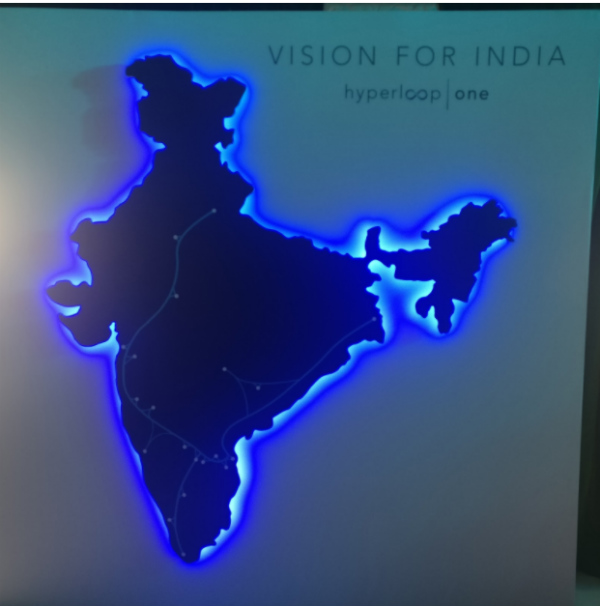
If made possible, it would ease up trade and lead to de-congestion in cities as well. This would also prove to be revolutionary for transportation of cargo from different corners of the country. For e.g., Chennai and Mumbai are currently the two biggest ports of the country. Any cargo transit between Mumbai and Chennai takes three days but, with hyperloop, this would decrease travel time for any sort of cargo transportation to just a few hours, and subsequently for any sort of trade that is happening between the eastern and the western ports of the country.
A company could have its manufacturing hub in one place, its office in another and its export office in some other place, because this would reduce costs immediately. A startup and a multi-billion corporation would benefit the same way from this revolutionary inter city concept. The geographical boundaries would indeed shift.
Pricing, Flexibility, And Affordability In Transportation: The Big Questions
If speculated, the one thing that allows hyperloop to stand out from all the available modes of transportation, apart from its speed, would be the flexibility in its availability that it claims to offer. One can imagine a model somewhat like a Metro station in a city, where one comes in, gets a security check, punches in, on-boards the train and gets off at their destination, and the pod keeps on moving. In rush hours, the frequency of the pod increases, otherwise, decreases. There’s no estimate given yet, as to how many people can travel in a pod, but the size of the pod would somewhere be around 30 metres.
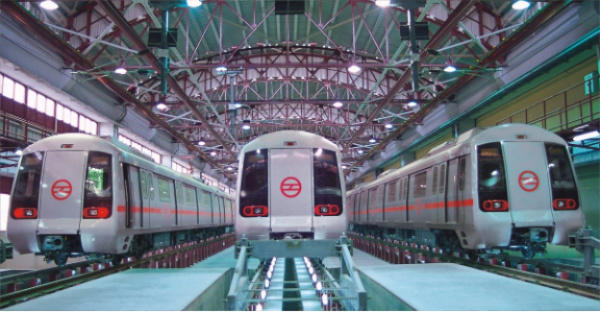
Taking it a step ahead, Prithvi adds, “It’s even better than the Delhi Metro because it’s completely on demand and, thus, saves cost, fuel, and energy. Whenever there is a need for it, you have a pod coming in. Imagine the station as a huge building, where in you would roughly have 20 pods that are not travelling, but, are stationary. Let’s say you have 10 people that need to travel, the pod comes up and takes them, then another 10 people come in, another pod will be released. If and when the station is empty, there won’t be any pods flying.”
When addressing hyperloop’s target audience, Prithvi states that the system looks at the value of time for every person. The question of affordability then arises, because as attractive and hail mary it might sound, it’s the average middle class Indian that needs the service and if it’s not affordable and becomes exclusive, it wouldn’t be solving any real issues.
But hyperloop is not only affordable for almost everyone looking to travel quickly, it’ll actually be cheaper than domestic commercial airlines as well. The estimated prices for passengers would be comparative and in all probability cheaper than bullet trains and airlines currently available in India. Even when it comes to the cost of building it, Prithvi claims that it is somewhere 40% less than what goes into making a high speed railway line.
The 2021 Vision: Is Hyperloop One India Possible?
On February 28 2017, Hyperloop One, one of the two companies vying to build the world’s first Hyperloop by 2020, announced its intent to begin operations in India by 2021.
At the moment, the Hyperloop One India team is working on three fronts together: technology, planning (the feasibility case study), and the stakeholder networking but is unable to declare an official time period for beginning operations (although the tentative time period is three years). But the absence of any proof makes all these claims appear somewhat flimsy. Additionally, India being a vast land of regulations, taxations, permits, and bureaucracies, the entity would have to fight one long and hard battle to build, develop, and sustain itself.
The process of tunnelling too is expensive. There is no proof as to how ordinary humans will respond to be being in windowless containers with that level of acceleration and deceleration. Or what happens if there is a malfunction or an attack on the tubes. As per a report, by the National & International Council For Scientific Research, more than 54% of India’s land is vulnerable to earthquakes currently, states such as Delhi, Maharashtra, Jammu & Kashmir, and Uttarakhand are among the “very severe intensity” or “severe intensity” zones. The process of land acquisition is also very tedious in India, and for a private body to acquire such a vast expanse of land would require NOCs from both state and central governments, in addition to paying taxes and adhering to various other regulatory complications as well.
Globally too, currently, there are no security systems in place to check the safety quotient of the technology. Since the technology is in very nascent stages, there are no safety checks in place as well. Also, the hyperloop is an entirely new system of transportation – it would fall under neither of the existing bodies, such as roadways or airways. Hence, there is a need for a separate body, to take care of regulations and policies, which would consequently entail a very time consuming project.
Hyperloop: Changing Time And Space With A New Reality
Copernicus was a Chinese philosopher who proposed that the world is flat and was renounced as a heretic for the same. This claim was debunked centuries later by Greek philosopher Socrates who stated that the earth is round and he was promptly poisoned for his efforts.
Hyperloop is as much a new theory and way of thinking as it is a new way of transportation. If executed well, it looks to be the harbinger of a different kind of space-time dimension which places a lot of value on a person’s time. In the race to automate everything from logistics to driving: the one key value addition that has emerged in the twenty-first century is that technology is not the devil (like Copernicus or Socrates are not devils and heretics) and will be used to make human life easier, better, more convenient.
Robots (even those rumoured to take over the earth eventually) are here to take over the mundane, boring tasks, leaving the higher level sentient beings with enough free time to upskill themselves, to become better.
In context of this new age leap of career choices – hyperloop technology hits all the several checkpoints in terms of technology that is here to help mankind. It is easy to use, will certainly make for better connectivity and convenience. The idea of a Delhi resident casually travelling to Pune for a day job, hopping to a posh restaurant in Mumbai for dinner before ‘hyperlooping’ back home is definitely something to look forward to.
But, there was a reason why Copernicus and Socrates were cast out of rational society in their respective times for espousing a mind-bending idea. For one, there was no proof of concept, for another, it would change the way everything in the physical universe was perceived. In a world that is defined by territories and geographies, the hyperloop looks to connect all of mankind to one another, once and for all.
But just like the philosophers needed to provide proof of concept, the companies building out this tech need to provide a valid, workable product that is safe, easy to use, and satisfies all the existing (and as yet not thought of) regulations and rules when it comes to actual usage. There is also the question of cost estimations, governmental support, infrastructural burdens and, most of all, educating the people as to what the technology will do – in a safe, structured and sound manner.
Given the myriad unresolved questions as well as the elastic timeline of the pilot projects and the Hyperloop India one (even though the proposed year is 2021), it is not hard to ponder whether hyperloop will change life and transportation as we know it forevermore, or just be another technology startup bubble doomed for failure.



